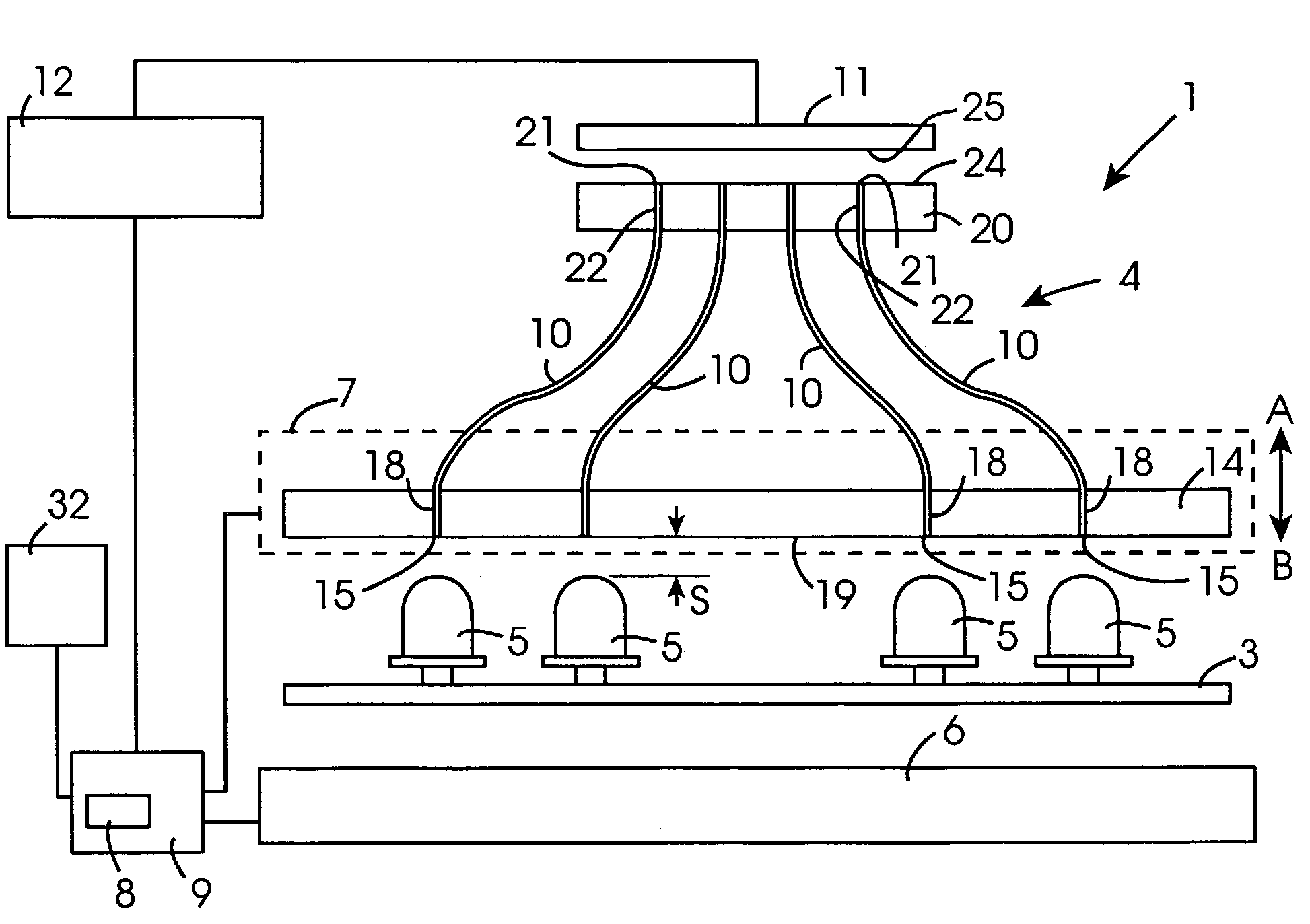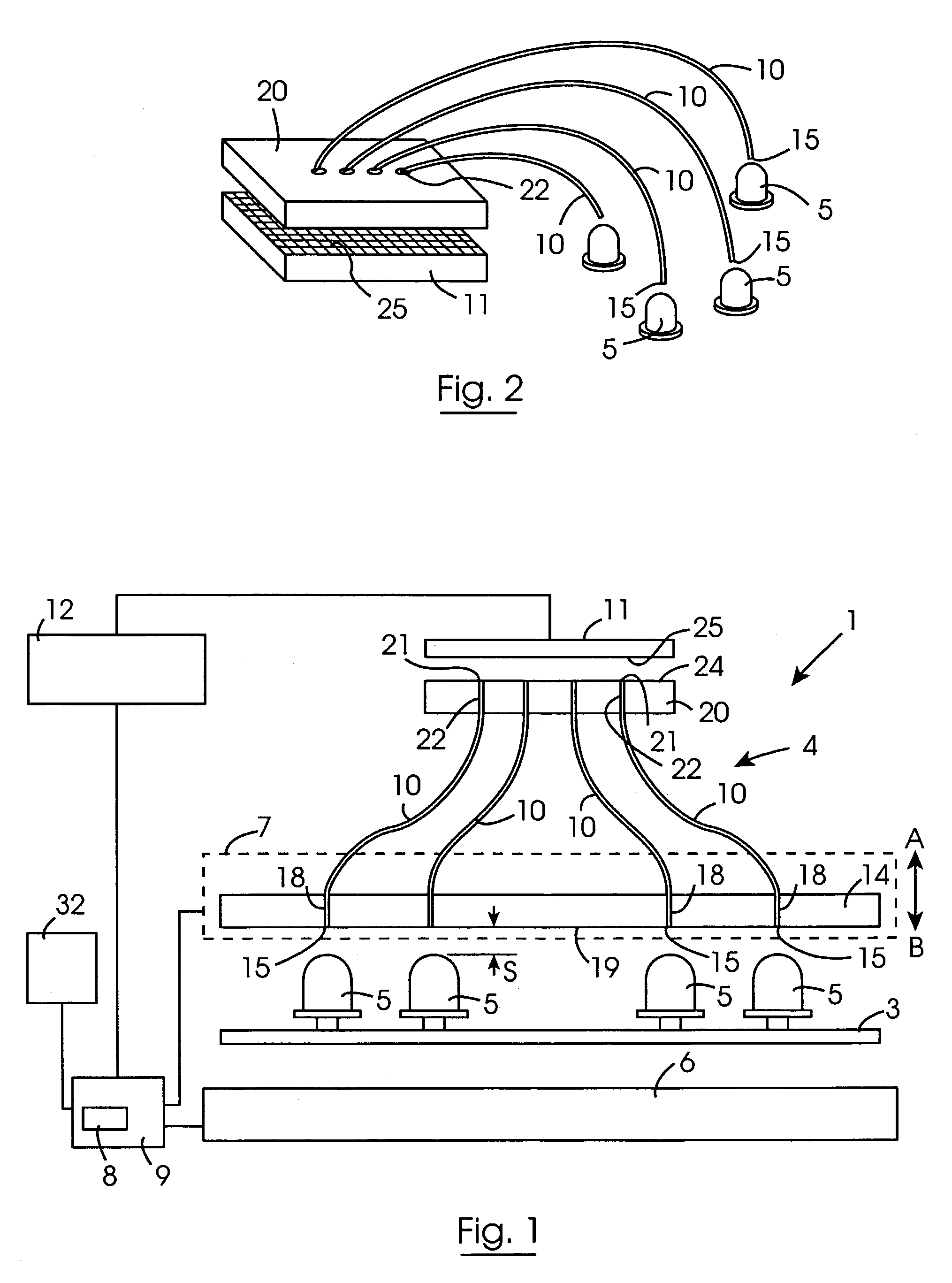Apparatus for testing a light emitting device, and a method for testing light emitting devices
a technology for light emitting devices and apparatus, applied in electrical apparatus, lighting and heating apparatus, photoelectric discharge tubes, etc., can solve problems such as failure leds being overlooked by operators, visual verification of leds is far from error-proof, and visual inspection tends to be relatively slow
- Summary
- Abstract
- Description
- Claims
- Application Information
AI Technical Summary
Benefits of technology
Problems solved by technology
Method used
Image
Examples
Embodiment Construction
[0047]Referring to the drawings and initially to FIGS. 1 to 4 there is illustrated a test fixture according to the invention indicated generally by the reference numeral 1 for testing printed circuit boards 3. The test fixture 1 comprises apparatus also according to the invention which is indicated generally by the reference numeral 4 for testing LEDs 5 of the printed circuit boards 3, and for verifying if the LEDs 5 are emitting light and if the emitted light from the respective LEDs 5 is of the correct colour and brightness. The test fixture 1 comprises a base 6 for sequentially receiving the printed circuit boards 3. Locating pins (not shown) are provided extending upwardly from the base 6 for engaging corresponding bores (not shown) in the printed circuit boards 3 for locating and aligning the printed circuit board 3 on the base 6. Guide pins (also not shown) extending upwardly from the base 6 slideably engage corresponding bushed bores (also not shown) in a mounting frame 7 for...
PUM
 Login to View More
Login to View More Abstract
Description
Claims
Application Information
 Login to View More
Login to View More - R&D
- Intellectual Property
- Life Sciences
- Materials
- Tech Scout
- Unparalleled Data Quality
- Higher Quality Content
- 60% Fewer Hallucinations
Browse by: Latest US Patents, China's latest patents, Technical Efficacy Thesaurus, Application Domain, Technology Topic, Popular Technical Reports.
© 2025 PatSnap. All rights reserved.Legal|Privacy policy|Modern Slavery Act Transparency Statement|Sitemap|About US| Contact US: help@patsnap.com



